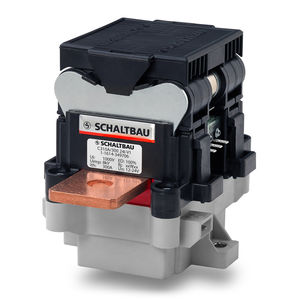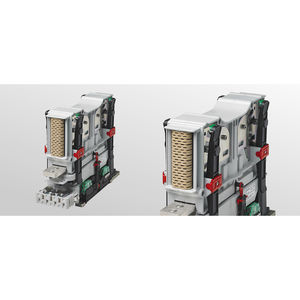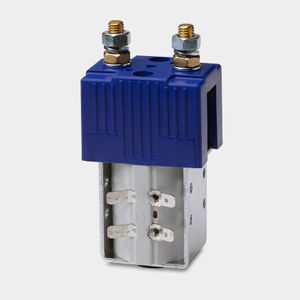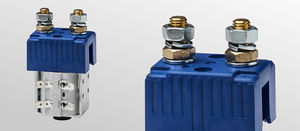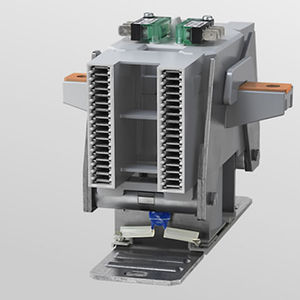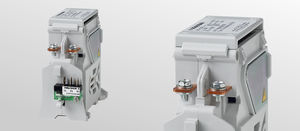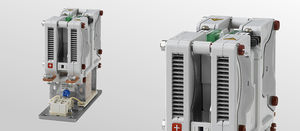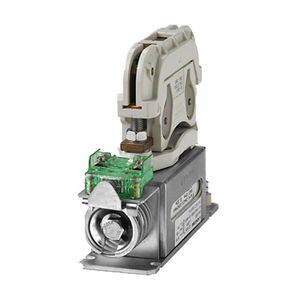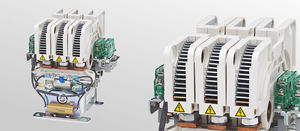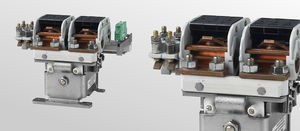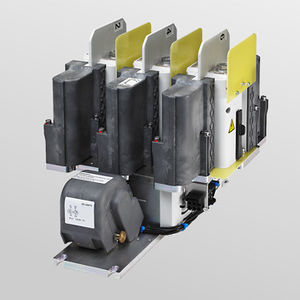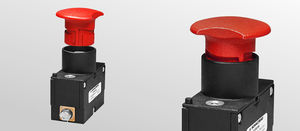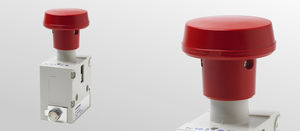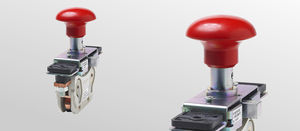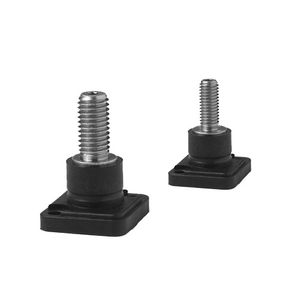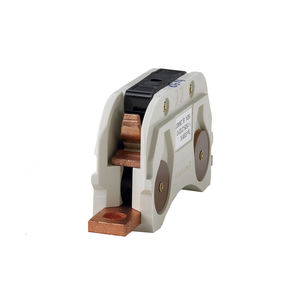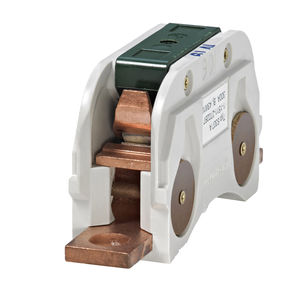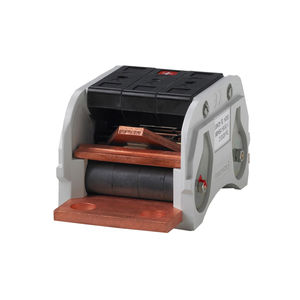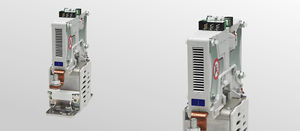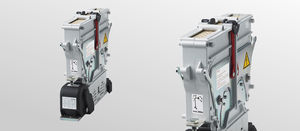
- Company
- Products
- Catalogs
- News & Trends
- Exhibitions
DC contactor C300high-powerelectromechanicalsingle-pole
Add to favorites
Compare this product
Characteristics
- Function
- high-power
- Technology
- electromechanical
- Electrical characteristics
- DC, single-pole, high-current
- Contact configuration
- 1 NO
- Applications
- for electric vehicles, for industrial applications, for photovoltaic applications, for power generation, battery, for renewable energy use, for the automotive industry, for marine applications
- Other characteristics
- compact
- Primary current
Min.: 500 A
Max.: 2,500 A
- Load voltage
1,500 V
Description
The bi-directional DC contactors switch high powers in a small space. With a making capacity of up to 2,500 amps, the compact switchgear is suitable for applications with high inrush current or high capacities.
All versions can carry up to 500 amps continuously. In the event of a short circuit, 5,000 amps, can even flow for 20 milliseconds without the contacts welding. The contactor therefore maintains its full function in order to disconnect high power ranges if necessary up to 500 amps and up to 1,500 volts – irrespective of the current direction. This full bi-directionality is important for systems with a charging and discharging process, such as in battery networks or electric vehicles.
Typical applications are the DC circuit in inverters, e.g. in photovoltaic applications, battery storage and chargers.
• Super-compact dimensions – high rated insulation voltage Ui up to 1,500 volts
• High conventional thermal current Ith up to 500 amps
• Making capacity Icm up to 2,500 amps
• Short-time current-carrying capacity Icw up to 5,000 amps
• Full bidirectionality – reliable disconnection of high performances
• Auxiliary switch with mirror contact function
Applications
• E-mobility
• Stationary energy storages
Catalogs
Related Searches
- Push-button switch
- Schaltbau single-pole switch
- Isolator switch
- Schaltbau technology switch
- Schaltbau switching relay
- Schaltbau multipole switch
- Schaltbau electromechanical switch
- Control foot switch
- Rotary electric switch
- Schaltbau safety switch
- Single pedal foot switch
- Schaltbau contactor
- IP67 switch
- Toggle switch
- Schaltbau touch switch
- Spring push-button switch
- 2-pole switch
- SSR
- Plastic switch
- Mushroom push-button switch
*Prices are pre-tax. They exclude delivery charges and customs duties and do not include additional charges for installation or activation options. Prices are indicative only and may vary by country, with changes to the cost of raw materials and exchange rates.







